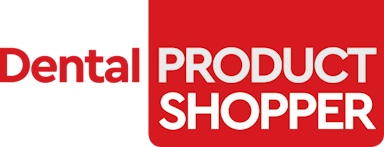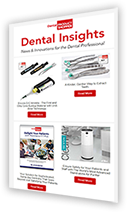 Q: With OraPharma’s mission of improving patients’ lives, what goes into your strategy and decisions to invest in products?
Q: With OraPharma’s mission of improving patients’ lives, what goes into your strategy and decisions to invest in products?
A: It has to fit our vision, which means we have to be addressing oral diseases and looking at products that really will benefit patients’ lives or help them with their disease state. Two of the most prevalent forms of inflammation derive from oral disease—that’s periodontal infections and caries. And we know that inflammatory issues compromise overall health, especially with patients who have comorbidities, such as heart disease, diabetes, COPD, and rheumatoid arthritis. Obviously, there are people who have periodontal disease who do not suffer from other morbidities, but there are people who have severe illnesses, and we really believe periodontal disease compounds that issue.
In the end, when we look to invest in new products, in R&D, in peer-reviewed studies, or in partnerships with insurance companies, we’re focused on trying to figure out how we can treat those patients or treat their oral diseases so that we can improve their lives. We want to be the company at the forefront of making the connection between oral health and body health with the ultimate goal of improving the lives of patients and hopefully reducing costs on the healthcare system.
Q: What can you tell us about the broadening of your portfolio in recent years?
A: We have ARESTIN, we have NeutraSal, and through our partnership with Datum Dental in Israel, we are also in the bone-regenerative space and believe we have the best-inclass regenerative products in the OSSIX portfolio. I saw a statistic that in the United States roughly 60 million teeth are lost every year, and maybe 30% of patients suffering from tooth loss are being treated. So when you think about these unfortunate results of periodontal disease and when we look at ways to expand our portfolio, the first question we ask ourselves is: “How do we help those types of patients?” The broadening of our portfolio reflects our commitment to bring good products into the marketplace and help clinicians increase recovery time, reduce financial costs to their patients, and ultimately minimize the need for more extensive types of treatments down the road.

Q: What need are you seeking to fulfill with your most recent addition, SPRIX?
A: When we look at the partnership we have to promote the SPRIX Nasal Spray, a lot of it goes back to a clear need to reduce the negative impact that opioids have in our communities. Secondly, when you look at the ADA’s statement on the use of analgesics to treat dental pain, they believe dentists should consider NSAIDs as the first line of therapy for acute pain management. Lastly, we know that whether it’s the weekends or late at night, patients may call a dentist saying that whatever they’ve been given just isn’t strong enough.
SPRIX allows us to tackle the negative impact of opioids, align with the ADA’s recommendations and, most importantly, improve the experience for both the patient and the provider when it comes to pain management. We are excited to provide an effective pain management option to dental professionals that is not an opioid, not a narcotic, and not a controlled substance. We are thrilled to have SPRIX in our bag in 2018.
 Q: What’s been the initial reaction to the SPRIX roll-out?
Q: What’s been the initial reaction to the SPRIX roll-out?
A: During market research, we spoke to many clinicians who confirmed the need for SPRIX in the marketplace. But the first couple of weeks post-launch have surpassed our expectations. SPRIX is a nasal spray, and its active drug is ketorolac, which is a very familiar, very effective NSAID. We did, however, wonder whether patients would have trepidation or fear of using a nasal spray, or whether the box warning that is common to the class of NSAIDs would be an issue. So far, what we are finding in the real world is that dentists are thrilled with SPRIX as another option. A few dentists I have spoken to put it this way: “After I have done substantive work in a patient’s mouth and there is a clear expectation of pain, beyond the addictive risks of an opioid, the last thing the patient needs is a large pill that may be hard to swallow and may not provide the needed pain relief.”
So, doctors have been thrilled to see another option—one that is effective and avoids prescribing an opioid as well as the potential phone call at night or on the weekends from a patient saying, “I need something else.”
Q: What is OraPharma’s approach to working with local practitioners?
A: In the end, we believe in partnering with offices. I know that may oftentimes sound like window dressing, but we understand that patients need to be educated, and there’s often a challenge for a patient to be able to make a healthcare decision, especially when there’s a certain amount of disposable income needed to pay for that treatment. So, we really believe in working closely with the whole office staff—treatment coordinators, office managers, hygienists, dentists—and building a model whereby we can educate and provide materials or present opportunities to educate the patient around the disease state, and be able to recommend the treatment.
So, we really work hand in hand. Part of that is making sure that our focus is clinically based, focusing on these diseases and the risk factors. And secondly, although we have a very large sales force, we minimize the amount of promotional products, which allows us the latitude and freedom to really work closely around one particular product at a time, so that the office feels comfortable with implementing it or recommending it for that patient.
Q: What can we expect from OraPharma in the future?
A: For so long, we’ve been known as the ARESTIN company. Our hopes are that clinicians and patients recognize OraPharma as a company that really addresses oral diseases. We will continue to focus on developing new products and acquiring new products that drive better healthcare and dentistry.
Ultimately, what’s paramount to us is that we’re getting people to see dental appointments as essential healthcare and see the connection between oral health and overall body health. If we can do that, we are staying true to our vision and fulfilling our promise to the doctors and patients we serve. So, we’re going to continue to be the advocates for dentistry. We’re going to continue to be out there educating clinicians and patients on the importance of dentistry and the importance of taking care of some of these oral diseases.




